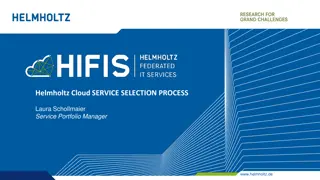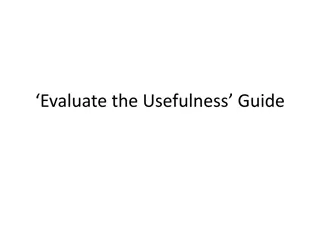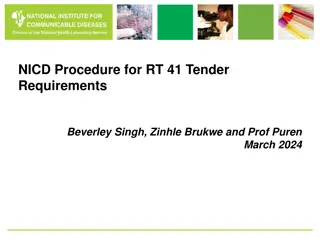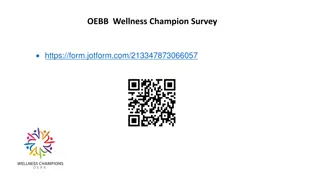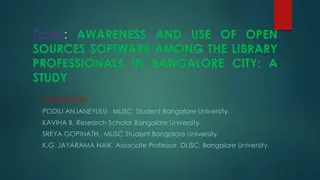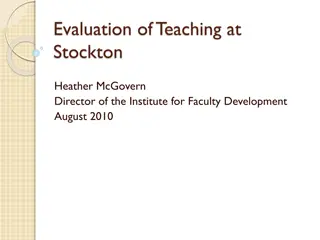Evaluation of Source Usefulness through Multiple Criteria
In this evaluation task, you will assess the effectiveness of questions based on various criteria such as authorship, type of source, purpose, and relevance of information. By carefully analyzing the source content and rubric, you will provide an overall judgment on the source's utility while evaluating each element individually. The process involves understanding the author's background, distinguishing primary and secondary sources, determining the source's purpose, and identifying factual gaps within the content for a comprehensive evaluation.
Download Presentation

Please find below an Image/Link to download the presentation.
The content on the website is provided AS IS for your information and personal use only. It may not be sold, licensed, or shared on other websites without obtaining consent from the author.If you encounter any issues during the download, it is possible that the publisher has removed the file from their server.
You are allowed to download the files provided on this website for personal or commercial use, subject to the condition that they are used lawfully. All files are the property of their respective owners.
The content on the website is provided AS IS for your information and personal use only. It may not be sold, licensed, or shared on other websites without obtaining consent from the author.
E N D
Presentation Transcript
Evaluate the usefulness of questions These question types are worth 5 marks. They also have a specific process you need to go through, to gain the marks. You must Read the rubric (short introduction) and the source carefully. Make a judgement on how useful the source is overall. Go through different elements of the source and evaluate the usefulness of each element. AUT authorship (who wrote the source). TYP identify the source as a Primary or a Secondary one. PUR explain why the source was produced (sometimes a bit of a guess). TIM outline and evaluate the origin of the source. CON make an evaluative comment on what the source tells us. You can do this twice. SOM identify relevant facts the source has missed out. You can also do this twice.
Opening statement You should begin by reading over the source, including the rubric (short introduction). A typical opening statement would look something like this Source A is fairly useful evidence of OR, if you think the source is very useful, say so; Source A is very useful as evidence of
Evaluating authorship (AUT) Look carefully at the rubric (short introduction). Think carefully about who produced the source. Every source will have either strengths or limitations. Here are a few examples People from the era being studied may exhibit bias, or have a limited view of events, but they give us a useful insight into what was happening. Historians (at National 5 level) are generally useful experts on the topic we are looking at, but may not have access to all available sources (some may have been lost).
Evaluating different types of source (TYP) For our purposes, there are TWO different types of sources; PRIMARY sources are written from the time of the events. They are useful insights into what was happening from one particular point of view. They may be limited, or biased towards one particular view. SECONDARY sources are written long after events, usually (but not always) by historians. They are usually produced by experts, who have looked at the period in history in great detail. They may not have access to information that has perhaps been lost.
Evaluating the purpose of a source (PUR) You need to state WHY the source was produced. Sometimes it is obvious, but sometimes it can be a bit of a guess. You need to then make an evaluative comment on this- ask yourself about the motivation of the person writing/speaking; is the person making a speech that is telling us the whole truth? Is the person trying to convince us their view is the correct one? Is the source a historian, who is trying to explain an event as a part of a history book?
Evaluating the timing of a source (TIM) Evaluating the timing, or origin of the source, is quite similar to evaluating the type of source. You need to comment on the usefulness of the source in terms of when it was produced. A source produced at the time of events gives us a useful insight into them, but may be limited in the information it provides. A source produced long after the events may be less reliable as memories fade. A source produced by a historian is produced by an expert who has studied the topic in depth.
Evaluating the content of the source (CON) This involves making a comment on the usefulness of information provided in the source (inside the box). A good idea is to take a short quote from the source, then comment on its usefulness. E.g. Source A tells us which is useful information because You can do this twice, and gain marks.
Lastly, explain what the source has left out (SOM) You can gain up to 2 marks for doing this. You need to think of any RELEVANT information that the source has failed to mention. Take a new line and begin by writing, e.g. source A fails to mention
An example question Source A was written by a modern historian, in 2009. Source A The most effective weapon in the Great War was the machine gun. The machine gun could fire up to 200 rounds a minute and was by far the biggest killer on the Western Front. Soldiers firing this weapon did not have to aim it, but could fire a deadly spray of bullets into the massed ranks of the enemy attacking a trench. Evaluate Source A as evidence of the effectiveness of the machine gun on the western front. (5) (You may want to comment on what type of source it is, who wrote it, when they wrote it, what they say and what has been missed out)
An example answer Source A is quite useful as evidence of the effectiveness of the machine gun, but has some limitations. Source A was produced by a modern historian, making it more useful as he/she may be an expert on the subject. The source is a secondary source, produced by a historian who is an expert, but who may not have access to all available sources, making it limited. The source was produced as a part of a history book explaining why the machine gun was the most effective weapon of the Great War, making it a useful source on the subject. The source was produced in 2009, so may be less useful as some records and facts may have been lost. The source tells us The machine gun could fire up to 200 rounds a minute which is useful information showing how powerful it was. The source also tells us it could fire a deadly spray of bullets into the massed ranks of the enemy showing it was a deadly weapon more useful information the machine gun. The source fails to mention that the machine gun was a heavy weapon in the Great War, so it was less useful to attack the enemy. The source also fails to mention that there were drawbacks to the machine gun it could overheat or jam, making it ineffective.











